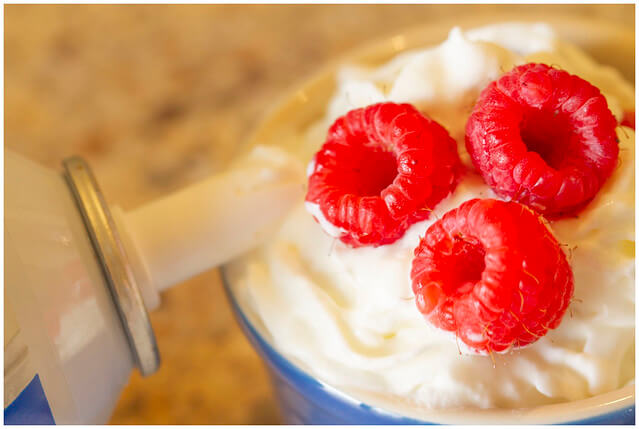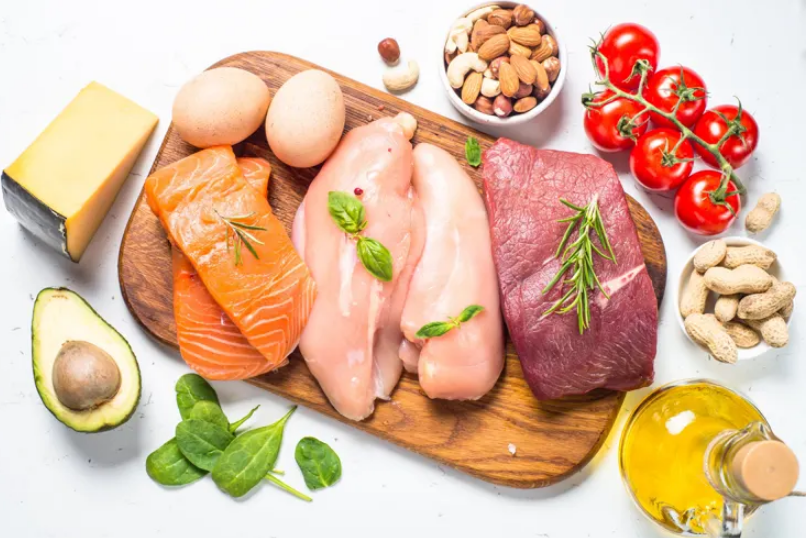
Being on the keto diet means you cut out carbs and up the intake of healthy fats, but what exactly does this mean? The success of a keto diet depends solely on your ability to keep your metabolic state in ketosis, where you burn off fat as fuel with ketones instead of blowing through carbs. Knowing exactly what to eat and what not to eat is important as you enjoy the multiple benefits of the keto diet.
The Keto Diet Dos & Don’ts
In order for keto to work properly, you need to be very careful about how much carbs you consume. You should only eat foods that have a 5% carb allowance. Now, not everyone has time to count carbs and calories, I sure don’t!
Instead, I like to stick to specific lists of approved food groups and items and avoid everything on a list of carb-heavy items.
As long as you follow these lists carefully, you don’t need to count carbs. Your body will state in ketosis and you’ll continue to lose weight, no matter how much of the approved food groups you eat!
Keto Diet Approved Foods
Making sure you give your body and brain enough fuel to continue functioning as normal, or even better than ever is important. Keto is not a starvation diet!
Eating healthy foods is key here, and you need to avoid anything starchy. Some of the great foods to eat large quantities of and make the most of your diet revolve around include:
- Leafy green vegetables
- Organic, grass-fed, meat
- Almonds and other fatty nuts
- Saturated and monounsaturated fats like butter, avocado, and olive oil
- Eggs
- Salmon, trout, and tuna
- High-fat dairy products like cheese, yogurt, mayonnaise, and cream cheese or other spreadables
- Bone broth
- Coconut, soy, and almond milk

As you can see, the list of approved foods is really extensive, so you have a lot to choose from even without eating lots of carbohydrates.
Keto Diet Foods to Avoid or Limit
One thing you may have been alarmed about the lack of on your approved foods list is fruit. Out of everything I had to cut out, that was the hardest for me to limit! Fortunately, you don’t have to say goodbye entirely to fruits, or even some of the other foods that weren’t mentioned above.
In moderation, you can still enjoy some food items that have more carbs than what keto is comfortable with allowing. If you choose to eat anything from this list, you probably won’t ruin your diet as long as you keep it in small amounts.
Restricting the following food items into occasional treats or once-a-day habits will help you stay in ketosis without requiring you to do tons of math about carb intake:
- Red wine, but a small glass with dinner won’t ruin your diet each day
- Fruits that tend to be lower in carbs like cantaloupe, berries, and watermelon. The latter is the best since it’s mostly just water!
- 70% or more dark chocolate is fine for occasions
- Heavy whipped cream
- Diet soda
- Tomato sauce
- Microwave meals, even if they say “keto safe”, check the carbs
For days when you need a little bit of a sweet pick-me-up for dessert, grabbing some berries and whipped cream or dark chocolate can work well in a pinch.
It’s also important to remember that a lot of pre-packaged food such as the Atkins popular brand can have hidden carbs.
Definite Keto Don’ts
Hopefully, by now you’re beginning to see a trend of what you can and can’t eat. Carbs are bad, fats are goods, and you should stick with “real” food only. Nothing that has to be processed and packaged is better for you.

If you need to know specifically what to avoid, take a look at this list of hard keto diet no’s. Consumption of any of these items will kick your body right out of ketosis and ruin that great metabolism you’ve got going on!
- Grains; any kind of pasta, bread, rice, beer, and other kinds of grain-heavy product. Yes, even quinoa!
- Sugar; obviously this is the big enemy in any diet, but even more so in keto. Even on a cheat day, you can’t gorge yourself on sugar, because it takes about 3 days to return to a ketosis metabolic state.
- Low-fat foods; since you’re getting your fuel to live from fats, you need to make sure you’re eating enough. Low-fat milk and other products aren’t helping you out any, and they usually up the carb count to make up for the lack of fats.
- Starches; carbs and starch are essentially the same things. This means root vegetables like potatoes, as well as flour, oats, and corn.
- Trans fats; not all fats are healthy fats! Getting this difference memorized is key. Margarine, fried foods, pastries, and junk food snacks are all high in processed trans fats.
- Spices with sugar; hidden carbs in your cooking supplies usually aren’t a big reason for concern, but you should still avoid sugary spices like onion powder, cinnamon, and ginger. Even chili peppers can have up to 4 carbs per tiny piece!
Keeping Up With Keto
Is your head spinning yet? My biggest concern when I switched to the keto diet was how I’d have time to prepare all of this real, healthy food. I thought that I would be spending hours doing meal prep in the kitchen and slaving away… but it’s way easier than you’d think!
Many websites, cookbooks, and YouTube channels explore quick, affordable, keto-safe dinner plans and some food prep service kits have keto diet options for fresh ingredients and recipes to be delivered to your door.
You should encourage yourself to be brave and branch out to try some of the popular keto alternatives out there. Use zucchini noodles for some healthy keto-safe spaghetti or lettuce leaves for a wrap instead of a tortilla.
Getting creative with your food options will help you maintain the diet without being tempted to “cheat” with the no-no foods.
